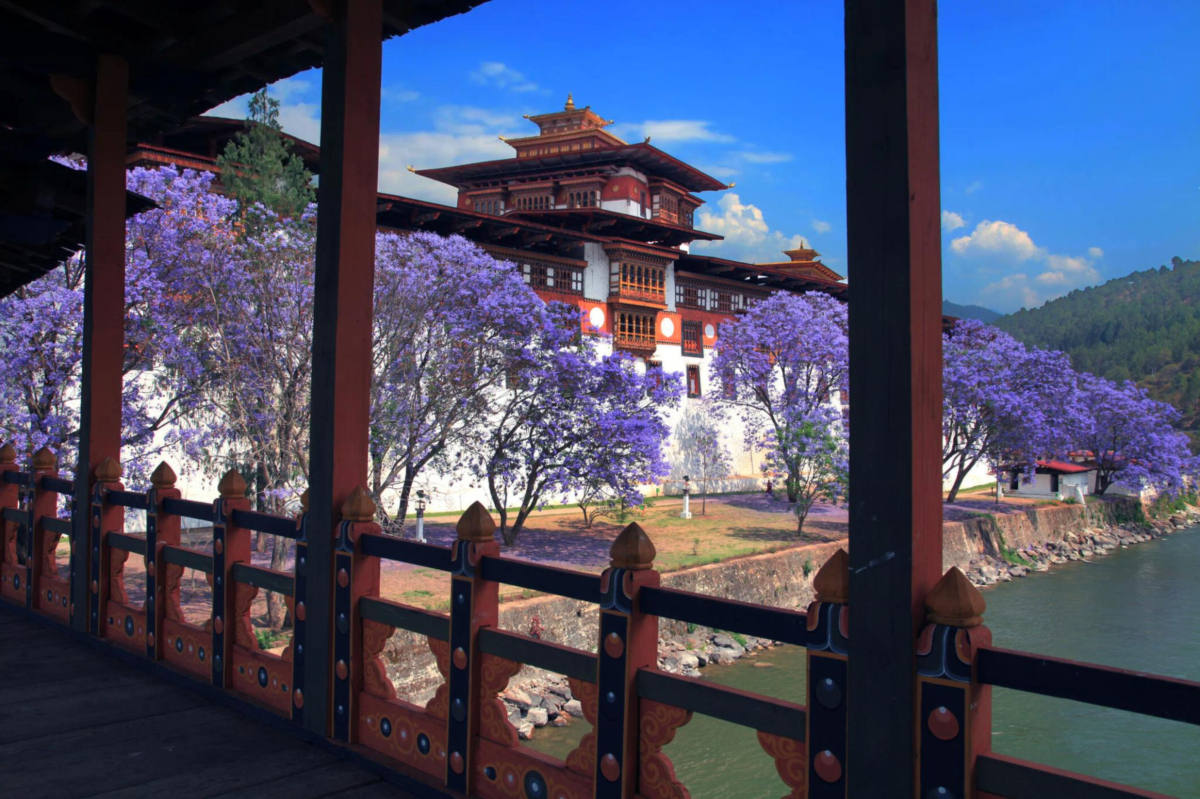Embarking on a journey to the mystical Land of the Thunder Dragon is a dream for many Indian travelers. With its breathtaking landscapes, rich cultural heritage, and serene monasteries, Bhutan offers an unparalleled travel experience. For Indian citizens, understanding the Bhutan travel guidelines and procedures of obtaining the Bhutan Entry Permit is crucial to ensure a smooth and hassle-free trip.
This guide provides essential information on entry requirements, permit processes, travel arrangements, and must-visit destinations, enabling Indian tourists to make the most of their Bhutanese adventure
Bhutan Entry & Travel Guidelines for the Indians in Brief:
Indian citizens do not need a visa to visit the best places in Bhutan. However, they are required to obtain a permit to enter the country.
How to Reach Bhutan from India
Here’s a guide on how to reach Bhutan from the nearest Indian towns, including information on how to get to these towns from major railway heads or airports in India:
1. Phuentsholing (Jaigaon-Phuentsholing Border)
- Nearest Indian Town: Jaigaon, West Bengal.
- Nearest Railway Head: Hasimara Railway Station (approximately 17 km from Jaigaon).
- From Kolkata: Board a train to Hasimara from Kolkata Railway Station.
- Nearest Airport: Bagdogra Airport (approximately 90 km from Jaigaon).
- From Kolkata: Fly to Bagdogra Airport and then take a taxi or bus to Jaigaon.
- Travel to Phuentsholing: From Jaigaon, walk or take a local taxi to the Phuentsholing Pedestrian Terminal.
2. Samtse (Samtse-Dolakha Border)
- Nearest Indian Town: Samsi, West Bengal.
- Nearest Railway Head: New Cooch Behar Railway Station (approximately 25 km from Samsi).
- From Kolkata: Board a train to New Cooch Behar and then travel to Samsi by taxi or bus.
- Nearest Airport: Bagdogra Airport (approximately 90 km from Samsi).
- From Kolkata: Fly to Bagdogra Airport and then travel to Samsi by taxi or bus.
- Travel to Samtse: From Samsi, drive or take a taxi to the Samtse border.
3. Samdrup Jongkhar (Samdrup Jongkhar-Darranga Border)
- Nearest Indian Town: Darranga, Assam.
- Nearest Railway Head: Darranga Railway Station (directly accessible).
- Nearest Airport: Tezpur Airport (approximately 30 km from Darranga) or Guwahati Airport (approximately 140 km from Darranga).
- From Guwahati: Fly to Guwahati Airport and then travel by road to Darranga.
- Travel to Samdrup Jongkhar: From Darranga, drive or take a taxi to the Samdrup Jongkhar border.
4. Sarpang/Gelephu (Sarpang-Gelephu Border)
- Nearest Indian Town: Gelephu, Bhutan.
- Nearest Railway Head: Jorhat Railway Station (approximately 120 km from Gelephu) or New Bongaigaon Railway Station (approximately 160 km from Gelephu).
- From Guwahati: Board a train to either Jorhat or New Bongaigaon, then travel to Gelephu by road.
- Nearest Airport: Guwahati Airport (approximately 160 km from Gelephu).
- From Guwahati: Fly to Guwahati Airport and then travel by road to Gelephu.
- Travel to Sarpang/Gelephu: From your entry point, drive or take a taxi to Sarpang or Gelephu.
Summary of Travel Routes:
- Jaigaon/Phuentsholing: Train/Flight to Hasimara/Bagdogra → Taxi/Bus to Jaigaon → Walk/Taxi to Phuentsholing.
- Samsi/Samtse: Train/Flight to New Cooch Behar/Bagdogra → Taxi/Bus to Samsi → Drive/Taxi to Samtse.
- Darranga/Samdrup Jongkhar: Train/Flight to Darranga/Tezpur/Guwahati → Taxi/Bus to Darranga → Drive/Taxi to Samdrup Jongkhar.
- Gelephu/Sarpang: Train/Flight to Jorhat/New Bongaigaon/Guwahati → Taxi/Bus to Gelephu/Sarpang.
These routes should help you plan your journey to Bhutan from India efficiently.
The criteria for the Personal Guest Application for hosting Indian guests in Bhutan are as follows:
- Applicant Details:
- Name of the Bhutanese host.
- Citizenship Identity Card Number of the Bhutanese host.
- Occupation of the Bhutanese host.
- Complete current address of the Bhutanese host.
- Phone number and email address of the Bhutanese host.
- Guest Details:
- Name of the Indian guest(s).
- Nationality of the Indian guest(s).
- Passport Number of the Indian guest(s).
- Acquaintance Details:
- Description of the acquaintance between the Bhutanese host and the Indian guest(s).
- Additional sheets may be used for elaboration if required.
- Submitted Documents:
- Duly completed personal guest application form signed by the Bhutanese host.
- Copy of the valid citizenship identity card of the Bhutanese host.
- Duly completed visa/entry permit application form signed by the Indian guest(s).
- Copy of the passport/voter identity card of the Indian guest(s).
- Birth certificate of the Indian guest(s) if under 18 years old.
- Detailed tentative itinerary of the Indian guest(s) while in Bhutan.
- Documentary evidence to support the application, such as proof of acquaintance with the guest(s).
- Affirmation:
- Declaration of the authenticity of all submitted documents by the Bhutanese host.
- Affirmation of making a truthful declaration in all aspects.
- Additional Notes:
- The application must be submitted in person by the Bhutanese host.
- The Bhutanese host must be a resident in the country for at least one year at the time of application.
- Separate personal guest application forms are required for each guest.
- Visa/entry permit application forms can be downloaded from www.doi.gov.bt.
- Processing time is 7 working days after submission of all documents.

